
Fra Angelico. The Mocking of Christ. 14401441. Wall fresco. Convento di San Marco, Florence
Fra Angelico supervised the fresco decoration of the building. Among the works considered to be by his hand are the Crucifixion with St. Dominic (cloisters) and the great Crucifixion (chapter house). In the convent also are frescoed Noli mi Tangere, Annunciation, Transfiguration, Mocking of Christ, Presentation in the Temple, Virgin and Child.

Fra Angelico Institution of the Eucharist Postcard Fra angelico, Art, The
And the artist is called Fra Angelico, so he was actually a member of the Dominican convent, and he represents the scene of the Transfiguration as a fresco in one of the cells where the clerics lived. So you can imagine waking up every morning and going to bed every night, and being confronted with this dramatic image.

Worshiping With Children Year C Transfiguration of the Lord (February 10, 2013)
Fra Angelico, this sacred art will assist Catholic teachers in helping students visualize truths of the Catholic faith. This image is a great lead-in to class discussion on Jesus' human and divine natures, Old Testament Prophets, and other topics.. The Transfiguration c. 1395-1455, Bl. Fra Angelico, Guido di Pietro, Cell 6 of the Convent of.
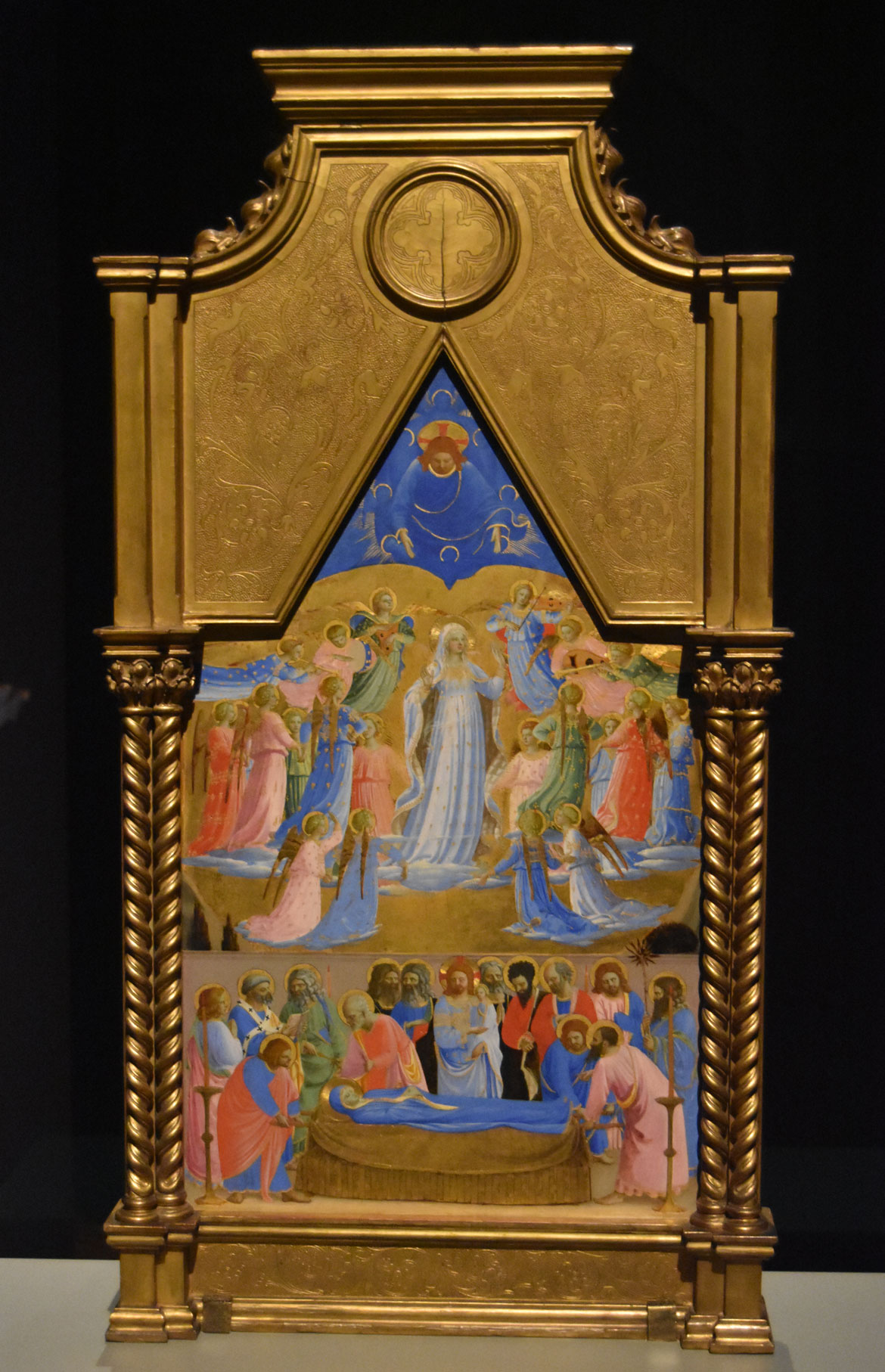
Rare Exhibit Of Fra Angelico, The Exquisite Renaissance Painter Who Pioneered New Tellings Of
Transfiguration is a painting by Italian Early Renaissance artist, Fra Angelico. It is dated to around 1440-1442 and was produced using egg tempera, in line with most artists of that era. We find here Christ with his arms out open, standing upon a platform which appears to be a natural formation, such as on the tip of a mountain.
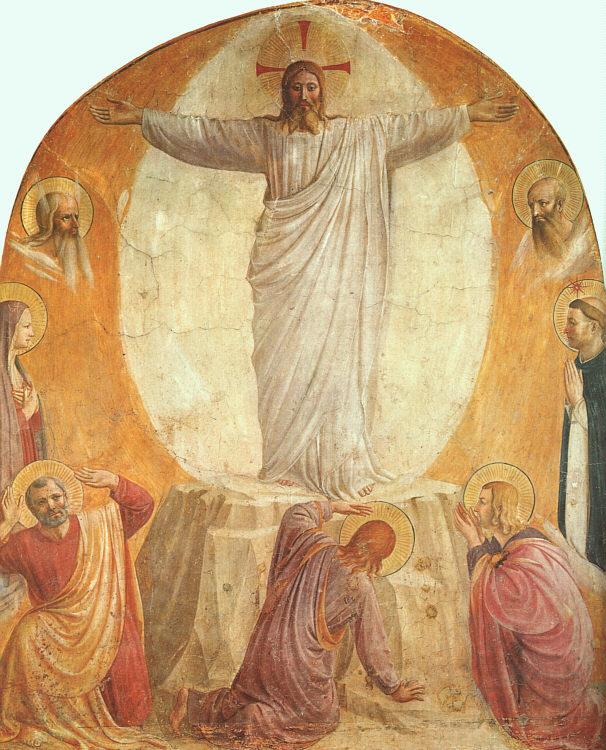
Albert Bierstadt Museum Transfiguration Fra Angelico
Fra Angelico, OP (born Guido di Pietro; c. 1395 [1] - 18 February 1455) was a Dominican friar and Italian painter of the Early Renaissance, described by Giorgio Vasari in his Lives of the Artists as having "a rare and perfect talent". [2]
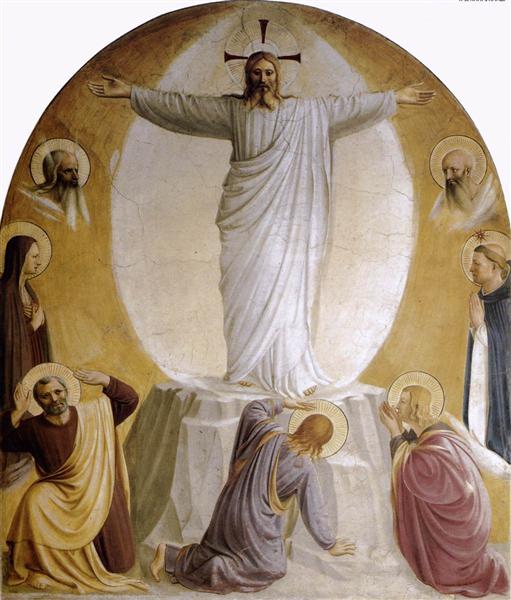
Transfiguration, 1440 1442 Fra Angelico
Fra Giovanni Angelico da Fiesole was born Guido di Pietro, in the Tuscan area of Mugello, near Fiesole, towards the end of the 14th century. A Dominican friar and Italian Renaissance painter, he.

Fra Angelico, Transfiguration, 1438 1440 Fra angelico, The transfiguration, Sacred art
Fra Angelico (1395-1455), The Transfiguration. This fresco can be seen in a friars' cell at the Dominican Convent of San Marco, in Florence. +
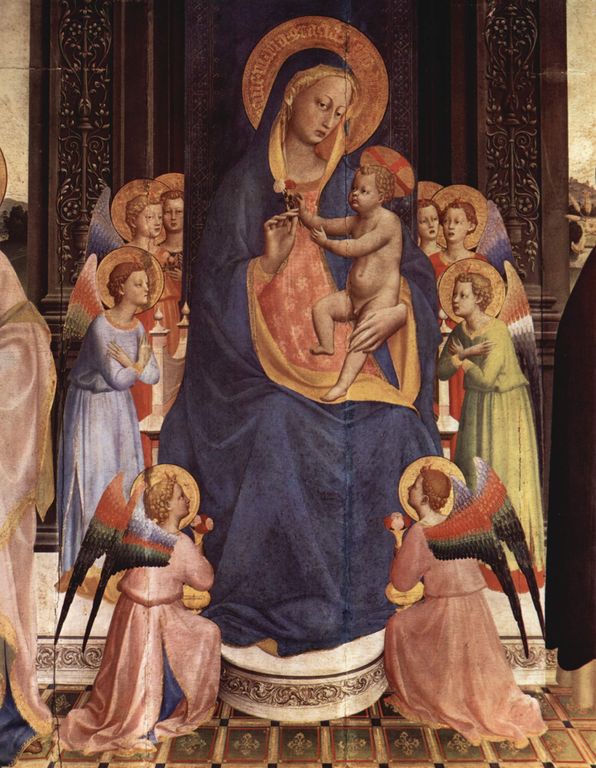
Fra Angelico Biography (c. 13951455) Life of Florentine Painter
Fra Angelico's Transfiguration depicts Christ with outstretched arms on a natural platform, foreshadowing his crucifixion and connecting the transfiguration ecstasy with passion. The fresco, located in Cell 6 of the Convent of San Marco in Florence, features a face, nimbus, and radiant white garments similar to the Mocking scene in adjacent.

Pin on Transfiguration
Fra Angelico has, it is true, conventional forms, and there is a certain sameness in his heads with their large oval countenances;. In the "Transfiguration on Mount Tabor" the figure of the ascending Christ with outstretched arms and noble features is one of Fra Angelico's best works, but the attitudes of the Apostles are conventional; the.

S. Stephen's Church in Providence
One is The Transfiguration — the original dates to 1440-1441 and was done for a cell in the monastery of San Marco in Florence. The second is The Resurrection, better known as Noli me tangere.

Transfiguration ANGELICO, Fra 1440 Holy Trinity Church
Fra Angelico (born Guido di Pietro; c. 1395 - February 18, 1455) was an Early Italian Renaissance painter described by Vasari in his Lives of the Artists as having "a rare and perfect talent". He was known to contemporaries as Fra Giovanni da Fiesole (Brother John of Fiesole) and Fra Giovanni Angelico (Angelic Brother John).
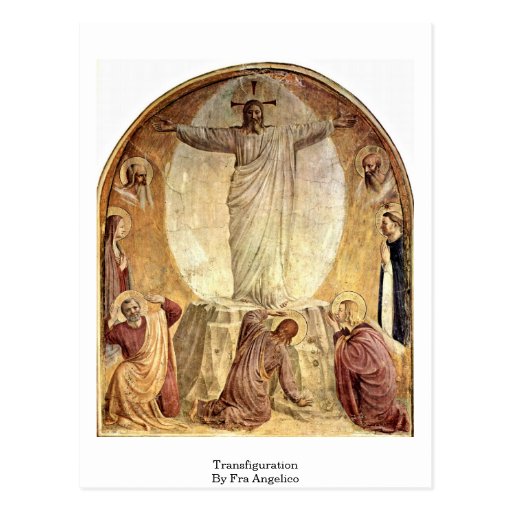
Transfiguration By Fra Angelico Postcard Zazzle
Directed by: Meryam Joobeur Written by: Meryam Joobeur Produced by: Maria Gracia Turgeon, Habib Attia Mohamed is deeply shaken when his oldest son Malik returns home after a long journey with a mysterious new wife. 'Transfiguration' was created in 1442 by Fra Angelico in Early Renaissance style.

IDLE SPECULATIONS Fra Angelico The Transfiguration in Cell 6
A brightly colored, semicircle fresco about thirty feet wide, Crucifixion depicts Christ and the two thieves on either side of him, nailed to their crosses, as saints and witnesses grieve below. "I looked long," James wrote. "One can hardly do otherwise."
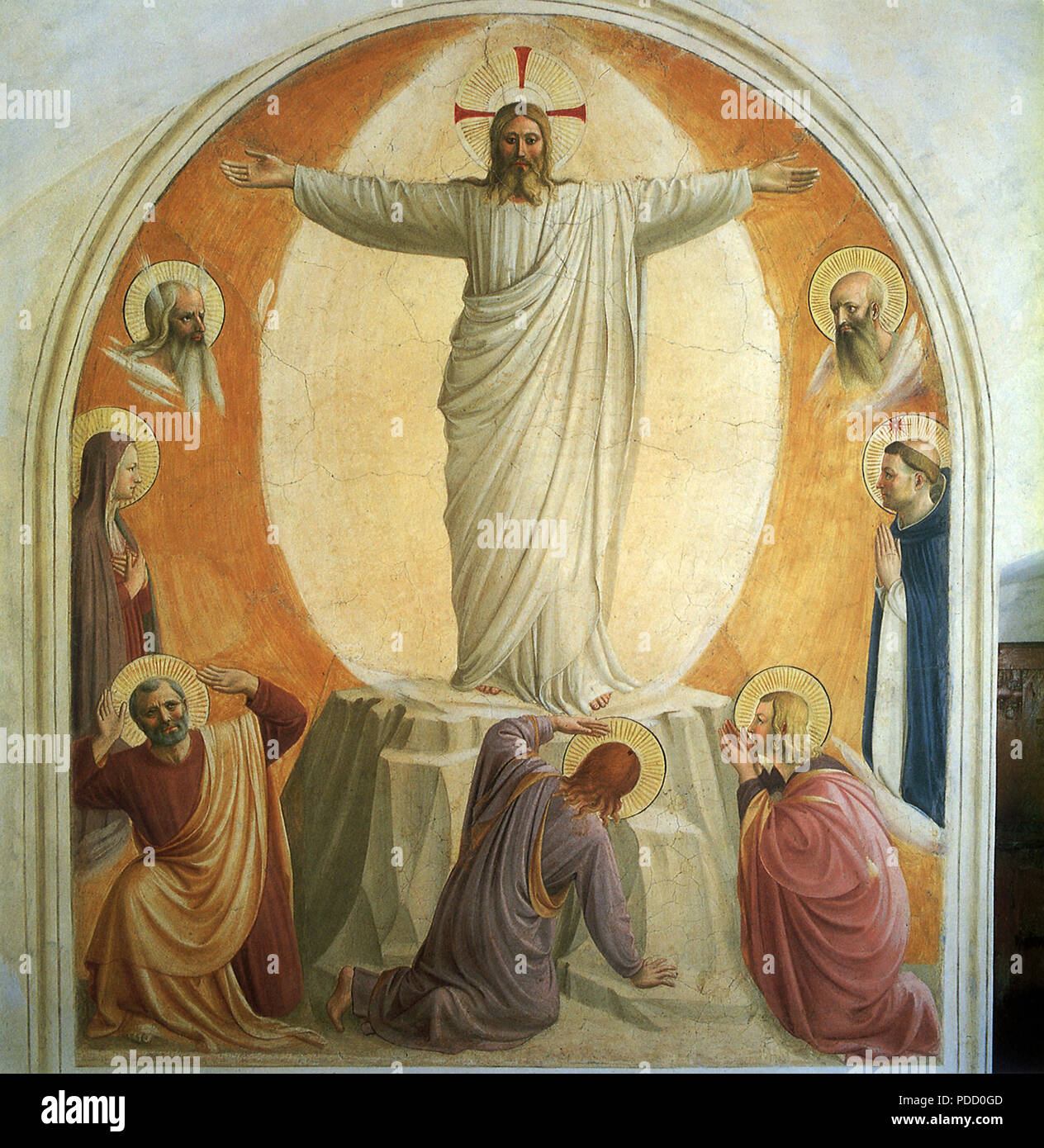
Fra angelico transfiguration hires stock photography and images Alamy
1440-42 Fresco, 181 x 152 cm Convento di San Marco, Florence This is the fresco on the wall of Cell 6 of the Convento di San Marco in Florence. In this fresco Christ stands on a rock, prefiguring his rising from the tomb. His arms are outstretched and in this He also foreshadows his own crucifixion.

Copy after The Transfiguration, Fra Angelico in the Museo di San Marco (Florence) Kaiser
By abstracting all but the essential central image, Fra Angelico makes the eye travel through a curve of space to return endlessly to its starting point—the perfect movement theologians ascribe to the contemplative soul. In 1443, the Pope visited San Marco to dedicate the finished convent.
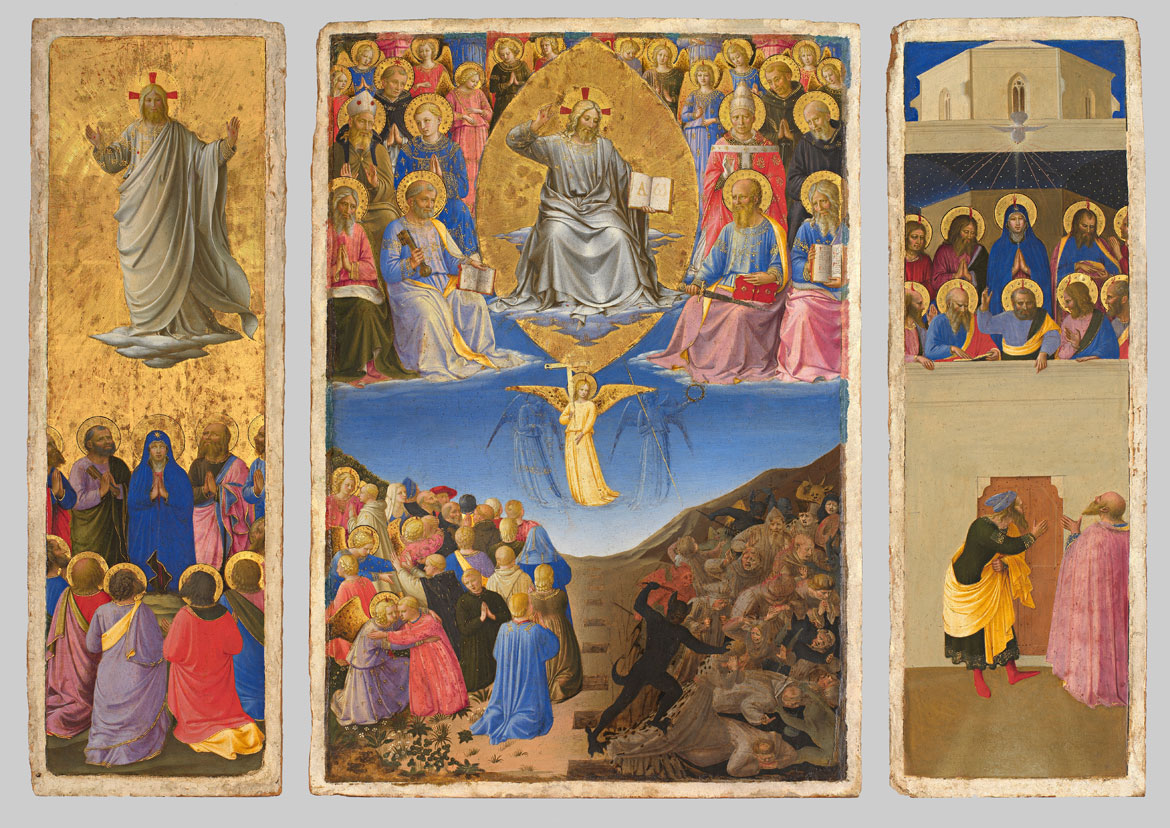
Rare Exhibit Of Fra Angelico, The Exquisite Renaissance Painter Who Pioneered New Tellings Of
Fra Angelico has further connected Christ's transfiguration ecstasy with his passion by depicting Christ's face, nimbus (halo), and radiant white garments in a remarkably similar way to the Mocking scene in the adjacent Cell 7 (which housed another cleric). The three apostles who accompanied Christ to the mountain cower in awe.